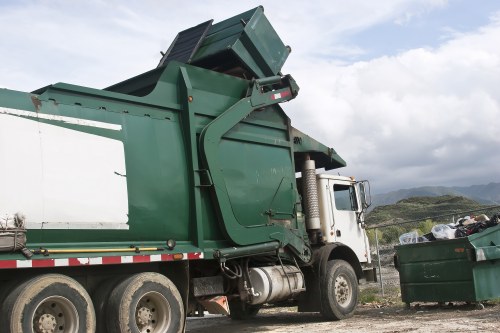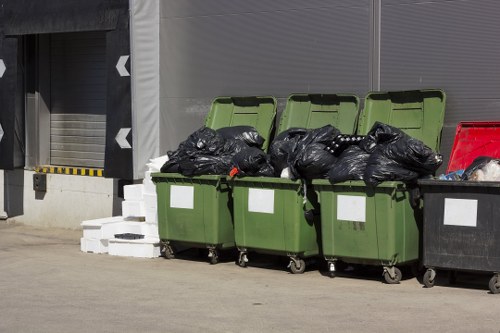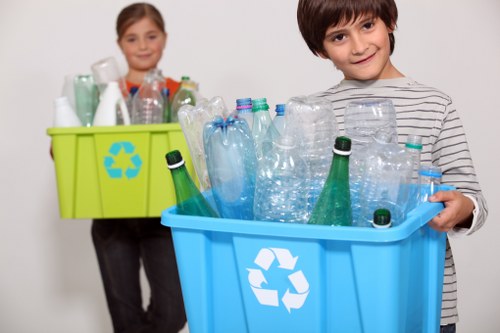Furniture Disposal in White Goods Recycle
Properly disposing of furniture and white goods is essential for maintaining a sustainable environment. With the increasing volume of household items reaching the end of their lifecycle, understanding the best practices for disposal and recycling is more important than ever.
Furniture disposal requires careful consideration to ensure that items are either recycled, repurposed, or disposed of safely without harming the environment. Similarly, white goods such as refrigerators, washing machines, and ovens contain components that can be recycled to conserve valuable resources.
In this comprehensive guide, we will explore effective strategies for furniture disposal in white goods recycle, highlighting the benefits, methods, and best practices to promote eco-friendly waste management.
Why Proper Disposal Matters

Improper disposal of furniture and white goods can lead to significant environmental pollution. Many of these items contain hazardous materials like metals, chemicals, and plastics that can contaminate soil and water if not handled correctly.
Moreover, landfills are rapidly filling up, making it imperative to find sustainable ways to manage waste. Recycling furniture and white goods not only reduces the burden on landfills but also conserves natural resources by reusing materials.
Additionally, proper disposal can prevent health hazards associated with decomposing waste, such as the release of methane gas and other harmful substances.
Benefits of Recycling Furniture and White Goods

- Environmental Protection: Recycling reduces the need for raw materials, minimizing deforestation and mining activities.
- Resource Conservation: Reusing materials like metal, wood, and plastic conserves natural resources and energy.
- Economic Advantages: Recycling creates jobs in the recycling and manufacturing industries, boosting the economy.
- Reduced Greenhouse Gas Emissions: Proper disposal and recycling lower the production of greenhouse gases, combating climate change.
Embracing recycling practices contributes significantly to a sustainable future by ensuring that materials are reused efficiently and responsibly.
Furthermore, many communities offer recycling programs that provide convenient and cost-effective solutions for disposing of large household items.
Steps for Effective Furniture Disposal

- Assess the Condition: Determine whether the furniture is still usable. If it’s in good condition, consider donating or selling it.
- Contact Recycling Centers: Reach out to local recycling facilities that accept furniture and white goods.
- Schedule a Pickup: Many recycling services offer pickup options for large items, making disposal hassle-free.
- Prepare Items for Recycling: Clean and dismantle items if necessary, following the recycling center’s guidelines.
By following these steps, you can ensure that your furniture and white goods are disposed of responsibly and sustainably.
Remember to check with your local municipality for specific regulations and available recycling programs in your area.
Recycling White Goods: What You Need to Know

White goods often contain valuable materials like steel, aluminum, and copper, which can be recycled and repurposed. Additionally, components such as compressors and motors are recyclable and can be refurbished for future use.
When recycling white goods, it’s important to handle them safely. Ensure that all hazardous substances, such as refrigerants from refrigerators and air conditioners, are properly removed and disposed of by certified professionals.
Many recycling centers have specialized processes for handling white goods to maximize material recovery and minimize environmental impact.
Choosing the Right Disposal Method

Selecting the appropriate disposal method depends on the item’s condition and local recycling options. Here are some common methods:
- Donation: If the furniture is still in good condition, donating it to charitable organizations can extend its life and benefit those in need.
- Sales Platforms: Selling items through online marketplaces or garage sales can provide financial returns and reduce waste.
- Recycling Programs: Utilizing municipal recycling programs ensures that materials are processed correctly and sustainably.
- Professional Disposal Services: Hiring specialized disposal services can handle large or complex items, ensuring they are recycled appropriately.
Choosing the right method not only promotes environmental sustainability but also aligns with responsible consumer practices.
Evaluate the condition of your items and explore available options to make an informed disposal decision.
Environmental Impact of Furniture and White Goods Disposal
The improper disposal of furniture and white goods has far-reaching environmental consequences. It contributes to landfill overuse, increases greenhouse gas emissions, and leads to the wastage of valuable resources.
Recycling mitigates these impacts by ensuring that materials are reused, reducing the demand for new resource extraction, and lowering the overall carbon footprint of consumer goods.
Moreover, recycling fosters a circular economy where products are designed for longevity and recyclability, promoting sustainable consumption patterns.
Implementing Sustainable Disposal Practices
Adopting sustainable practices in disposing of furniture and white goods involves integrating recycling into daily life. Here are some tips:
- Plan Ahead: Schedule regular disposal of old or unused items to prevent accumulation.
- Educate Yourself: Stay informed about local recycling programs and guidelines.
- Choose Sustainable Materials: When purchasing new furniture or appliances, opt for products made from recyclable or sustainable materials.
- Repair and Refurbish: Extend the life of your items by repairing or upgrading them instead of discarding.
By integrating these practices, you contribute to a more sustainable and environmentally friendly lifestyle.
Encourage friends and family to adopt similar practices to amplify the positive environmental impact.
Local Recycling Programs and Resources
Many communities offer robust recycling programs that facilitate the disposal of large items like furniture and white goods. These programs often include:
- Scheduled bulk waste pickups
- Drop-off centers for large items
- Recycling incentives and rebates
- Information on hazardous waste handling
Utilize these resources to ensure your items are recycled properly and contribute to community sustainability efforts.
Visit your local government’s website or contact waste management services to learn about available programs in your area.
Innovative Recycling Technologies
Advancements in recycling technologies have improved the efficiency and effectiveness of recycling furniture and white goods. Innovations include automated sorting systems, advanced material recovery processes, and eco-friendly material treatments.
These technologies enhance the ability to separate and process different materials, ensuring higher recycling rates and better quality recycled products.
Investment in research and development continues to drive progress in sustainable waste management, making recycling more accessible and impactful.
Challenges in Furniture and White Goods Recycling
Despite the benefits, recycling furniture and white goods presents several challenges. These include the complexity of disassembling items, the presence of mixed materials, and the transportation costs associated with large items.
Additionally, lack of awareness and limited access to recycling facilities can hinder effective disposal efforts.
Addressing these challenges requires collaborative efforts between consumers, businesses, and governments to streamline recycling processes and promote sustainable practices.
Future Trends in Sustainable Disposal
The future of sustainable disposal lies in innovation and increased consumer awareness. Trends such as the circular economy, where products are designed for reuse and recycling, are gaining momentum.
Moreover, the integration of smart technologies in waste management systems can optimize recycling processes and improve material recovery rates.
As society continues to prioritize environmental sustainability, the strategies for furniture disposal in white goods recycle will evolve to become more efficient and inclusive.
Conclusion
Effective furniture disposal in white goods recycle is crucial for environmental protection and resource conservation. By understanding the best practices, utilizing available resources, and embracing sustainable disposal methods, individuals can significantly contribute to a greener future.
Remember to assess the condition of your items, explore recycling options, and adopt practices that promote sustainability. Together, we can make a meaningful impact on waste management and environmental conservation.
Contact us today to learn more about sustainable furniture disposal and white goods recycling services available in your area.